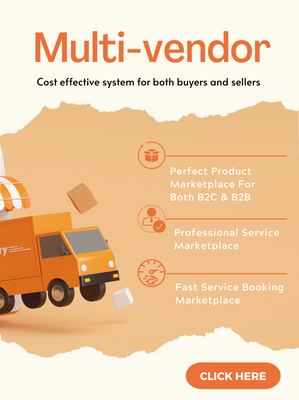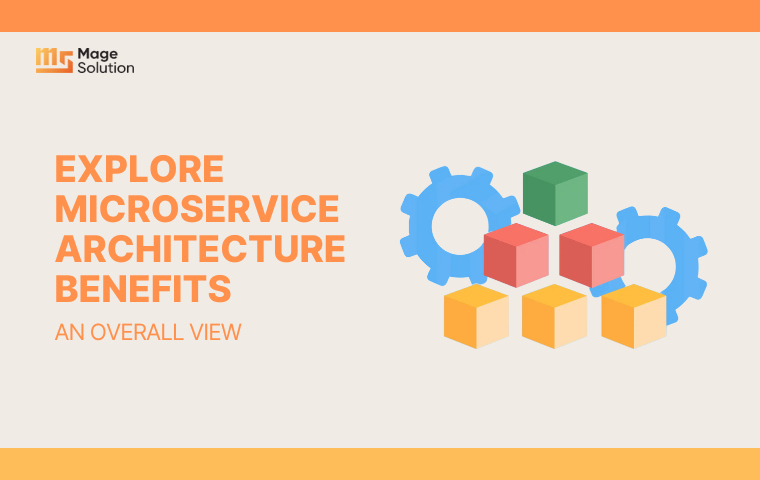Your cart is currently empty!
Guide of Microservice Architecture: From A to Z for Your Business
Wanting to have a comprehensive guide of microservice architecture? Dive deep into our valuable article and understand more about it.
Introduction
The microservice architecture market has seen incredible growth worth millions of dollars from 2017 to 2022. According to CAGR forecasts, it will continue to have remarkable advances worth millions of dollars by the year 2029. Innovations and technological advances that e-commerce businesses can quickly apply to pursue volatile trends in the market are the reasons and motivation for many business owners to decide to apply this model.
The article below will give you basic information and an overview of microservice architecture. From there, you can evaluate and consult more thoroughly about the ability to apply and develop this architecture in your digital commerce business.
What is Microservice Architecture?
Definition
Microservice architecture is a modern approach to software development. In it, applications are decomposed and built into a set of small services. Each microservice will be responsible for a separate, specific business and operational capability.
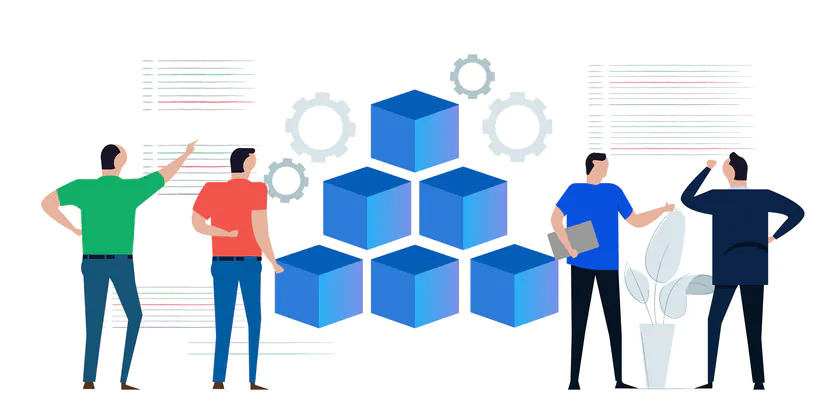
In microservice-based architecture in e-commerce, unlike the monolithic architecture version, each microservice will communicate with each other through clearly defined APIs. Modular design promotes flexibility, scalability and resilience like never before. E-commerce businesses are empowered to proactively build and deploy software solutions that operate flexibly for each specific purpose.
At the same time, separating large applications into smaller and more manageable parts like microservices architecture also simplifies the management process and fixes errors that arise, if any. Of course, this does not affect the overall sales process and customer experience.
Some prominent example platforms using microservice architecture include Disney or Netflix.
Key Characteristics

Some typical characteristics of microservice architecture:
- Modularity and decoupling: modularity is emphasized in microservice architecture where applications are divided into smaller and more self-contained services. Each microservice will be in charge of a separate function, such as user authentication, payment processing, or inventory management. However, they still combine together in a certain aspect to create a mature e-commerce picture, with seamless customer experiences.
- High resilience and fault isolation: with microservice architecture, if one service fails unexpectedly, it is not the end of your entire e-commerce business. In other words, other microservices can continue to operate independently, and the overall shopping experience is generally not too severely affected from error detection to error correction. Microservices also allow services to be degraded in a lightweight manner, maintaining business stability.
Microservice architecture also allows business owners to quickly respond and fix unexpected errors or customer feedback.
- High scalability: each microservice operates independently, this is also the premise for e-commerce businesses to expand the scale of stores without affecting the entire application. At the same time, this also plays an opportunity for business owners to choose the function they want to develop the most based on their business plan, and minimize costs instead of modifying the entire operating system.
Microservice architecture also helps businesses scale horizontally, meaning multiple instances of a service can be deployed on different servers or containers. This process helps handle work effectively and race against time.
- Diversity of programming languages allowed: Microservice architecture allows businesses to take advantage of many technologies and programming languages, corresponding to each specific purpose and task. This approach removes the limitations caused by the overall framework. You can leverage the database of microservice architecture to innovate, continuously improve, and test new trends without too much difficulty.
Microservice Architecture vs Monolith: Which Differences?
With our e-commerce consulting experience, clearly distinguishing microservice architecture vs monolith before delving into it will create an important foundation for determining the goals of using this architecture in your business.

You don’t have to wait any longer, because our comparison table below will briefly point out these differences.
| Comparison aspects | Microservice architecture | Monolithic architecture |
| Structure | Decompose into small services that can exist and operate independently | Consist of a single environment and codebase that are interconnected into a coherent whole |
| Modularity | Emphasize modularity and the ability to connect without being too related to each other (but still combine coherently) | Monolithic structure with tight connection between components |
| Expansion capability | Horizontally scale each service based on demand | Scale vertically by adding resources across the entire application |
| Deployment | Deploy independently in each individual microservice | Requires full application deployment |
| Fix and isolate errors | Ability to isolate errors, errors in one microservice do not affect the operation of other microservices | Failure in any part can affect the entire system |
| Development speed | Drive fast and limitless development cycles of individual microservices | Development is slower due to the need for coordination and integration |
| Operational complexity | Certain technical knowledge is required because microservice architecture gives initiative to the business | Simpler, but can become complex as the application needs to grow |
| Flexibility | Flexibly adopt new technologies and scale individual components | Limited choice of technology due to the need to change overall online stores |
Microservice Architecture: Important Components and Functions
Before officially applying microservice architecture to your e-commerce business, you should clearly understand how some of its important components and functions below operate.
Microservices and API
API (Application Programming Interfaces) supports communication between microservices in the microservices architecture. Each microservice exposes its distinct functionality and tasks through clearly defined APIs, allowing other services to simultaneously access and apply its capabilities without having to understand the detailed implementation.

APIs play a role in specifying how microservices interact and exchange data. This abstraction layer not only promotes connection between services, but also aims at the independent and consistent development of each service in particular and your e-commerce business in general.
These interfaces also allow microservices to integrate seamlessly with third-party services. This enhances the process of expanding and enhancing the operating functions of the enterprise.
Microservices and Cloud
Microservice architecture and cloud platforms always work hand in hand. The cloud platform provides the infrastructure and services needed to host and manage microservices, allowing businesses to focus on developing and adding increased functionality without worrying about infrastructure.

Microservices architecture, by its very nature, remains extremely well suited to cloud environments. With horizontal scaling, microservices easily leverage native services on cloud-based platforms such as load balancing, container orchestration or automatic scaling to meet the flexible needs of customers on digital stores.
Microservices and SOA
What microservices and SOA (Service-Oriented Architecture) have in common is that they both emphasize a modular approach and software development based on service approaches. However, there still needs to be a clear distinction between these two types of architecture:

- SOA: focuses on building services that are reusable and easily shared across multiple applications; towards a centralized management model.
- Microservices architecture: prioritizes the autonomy and independence of each service; moving towards a decentralized governance model, allowing teams to develop and scale services independently.
However, both these architectures share similar principles such as loose coupling, service reuse, and interoperability. They become complementary approaches to building flexible systems that help businesses easily expand and sell online on omnichannel e-commerce.
Microservices and Containers
Containers have become indispensable in implementing microservice architecture. They are responsible for encapsulating microservices and their dependencies, ensuring consistency across different operating environments, and simplifying the deployment process across infrastructure platforms.
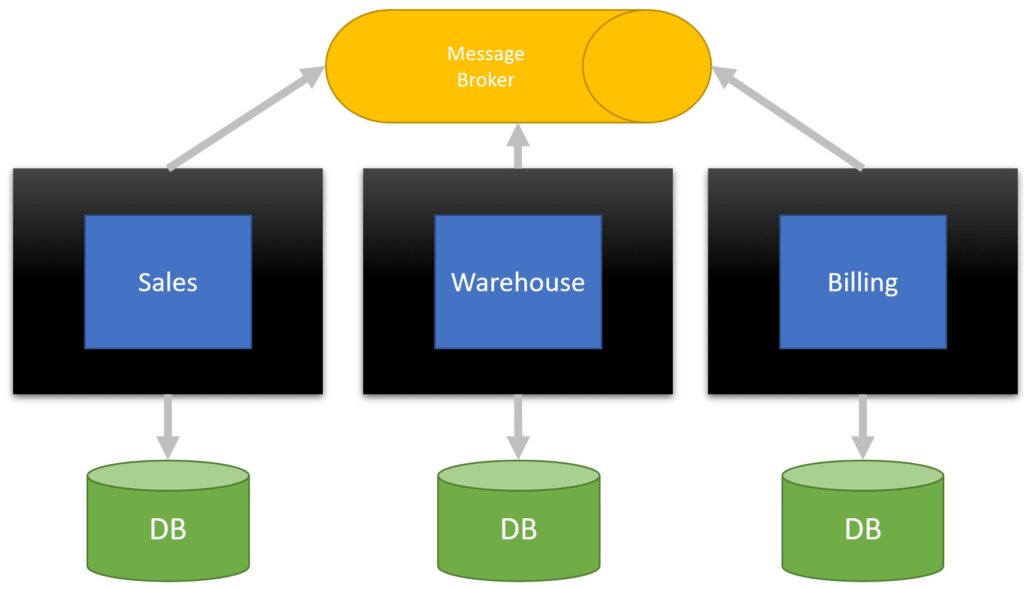
Some popular container orchestration tools like Kubernetes provide automated container management and scaling, further enhancing the flexibility and scalability of microservice architecture. With this valuable support, businesses can quickly streamline the microservice architecture implementation process, while speeding up time to market and optimizing the use of resources in the operations process.
Special Notes for Microservice Architecture Users: How to Overcome Challenges
Possessing many advantages and flexibility in the process of operating an e-commerce business, however, microservice architecture also brings many challenges to businesses, especially growing ones. You really have to keep these things in mind before officially diving into the process of building and operating microservice architecture.
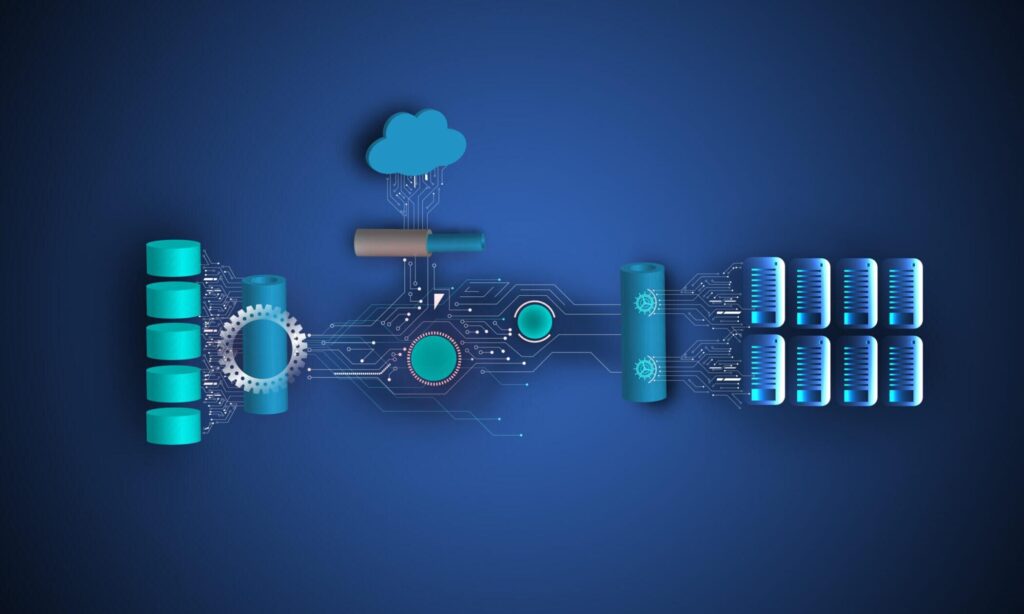
Usual Challenges when Using Microservice Architecture
Common challenges businesses encounter when using microservice architecture:
- Complicated distributed system: without a technical background and a certain understanding of microservice architecture, you may have difficulty initially applying it to your digital store, also with the support of mobile ecommerce apps. In particular, distributed systems and the need to understand how to communicate between networks will cause confusion for business teams.
- Discover and master the orchestration of services: each service corresponds to a separate microservice, and you need to master the interaction between them. Maintaining service registries, implementing load balancing, and managing microservices discovery mechanisms are important and extremely complex tasks, especially for newbies.
- Operational complexity: with many microservices operating independently, microservice architecture requires many complex operational tasks such as monitoring, thorough documentation, deployment and scaling. Ensuring thorough e-commerce business lifecycle management when applying microservice architecture requires you to have high availability, always available to fix problems if any. You need strong DevOps practices in this case.
- Ensure consistency in data management: microservices often have their own databases. This can lead to certain challenges in managing transactions across all services and ensuring close coordination, to make all shopping experiences across your online stores seamless.
3+ Advice for Your Business
Based on our expert experience in running multiple ecommerce projects with microservice architecture, we offer the following advice for you:
- Embrace DevOps practices: apply them to automate deployment processes, monitor system health, and ensure rapid business response cycles. Implementing Infrastructure as Code (IaC), Continuous Integration/Continuous Deployment (CI/CD), or automated testing can all streamline the operations of microservice architectures.
- Prioritize services with observability: you should invest in end-to-end business monitoring, search, research, and evaluation solutions in microservices. Some prominent distributed monitoring tools commonly used in microservice architecture are Jaeger, Zipkin; or data logging and monitoring platforms like the ELK stack can have a role in diagnosing problems and optimizing system performance.
- Start small: as a first step, start with a few well-defined microservices that solve your business’s most important needs. Prioritize simplicity, flexibility, and modularity in your initial design, then learn fundamental lessons from production implementation. This way, you can minimize risk, validate assumptions, and gradually build yourself a strong microservice architecture ecosystem.
- Consider finding and partnering with a consulting agency: You can also search for ecommerce consulting agencies that have experience related to microservice architecture. This serves as the optimal solution when you do not want to spend too much time and money learning thoroughly how to operate, or building an internal team without being able to properly determine the capabilities and commitment of the team. Consulting agency will accompany your business from the first steps, identifying strengths and weaknesses to provide advice, specific operations and reports on microservice architecture for your ecommerce business.
Final Thoughts
In general, microservice architecture is a form that is increasingly becoming a trend for ecommerce businesses. Giving proactive power to operating businesses, microservice architecture is a big step forward that prioritizes flexibility in editing and developing digital stores, instead of applying too traditional methods.
Of course, like our advice above, you can still find a professional consulting unit to advise and realize microservice architecture for your business. Magesolution is one of the options worth considering for you. Possessing 16+ years of experience in the ecommerce field with thousands of large and small ecommerce projects, Magesolution confidently brings a thorough consulting process and application of microservice architecture. This journey includes e-commerce testing and enhancement services, contributing to improving the operating process and quality of your e-commerce business.
Don’t hesitate to contact us immediately for more detailed information about our valuable process of building microservice architecture for your website!
